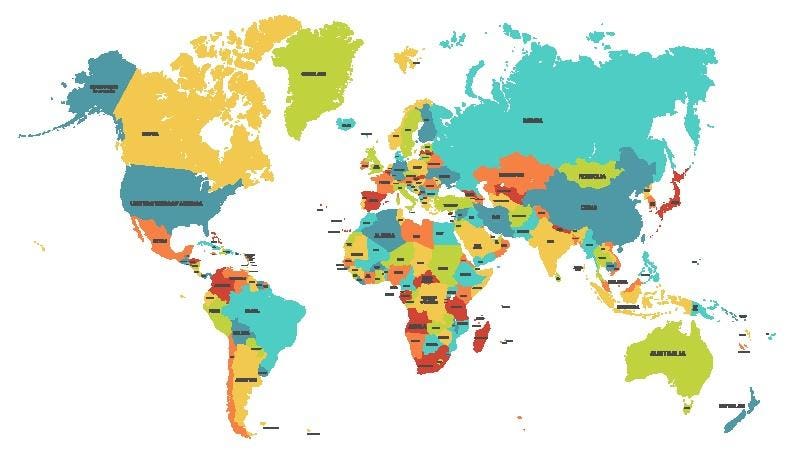Imagine what you can do with a living, learning version of your prospective customer.
Deposit Photos
“Knowledge is power,” the philosopher Francis Bacon once wrote.
And yet, many companies still find themselves shooting in the dark when pursuing prospects. Their salespeople have little to go on but instinct when it comes to understanding the very people they most wish to convert.
About the best thing they have going for them is a traditional marketing persona. Wrike.com describes the entity as “a fictional character created by a marketer to represent a certain demographic in their target audience.”
Limitations of Traditional Personas
Even when companies invest time and energy in building these avatars, their usefulness is often limited to internal interpretations. Subjective and often piecemealed together, such representations tend to be more of reflective of the team’s projections due to personal experiences or fractured CRM reports.
Shallowly conceived and reliant upon hunches, these profiles can lack the full complexity of a three-dimensional human. Too often paper thin, they fail to give field reps and accounts specialists the confidence needed to close deals when going into an important sales meeting.
Not long ago, a common mantra was: ‘There’s an app for that.’
Today? The phrase might as well be: ‘There’s AI for that.’
Hello, Synthetic Personas
At least that’s Mark Osborne’s view.
CEO of Modern Revenue Strategies, he’s a proponent of something called synthetic personas. “AI-powered, they’re dynamic representations of customers combining actual and assumed data,” explains Osborne. “What’s so helpful is that they’re capable of learning and evolving the more companies interact with them.”
Not long ago, I wrote about a similar phenomenon for Forbes called AI Mind Clones. Using Large Language Models (LLMs), these are sophisticated likenesses of people, living or dead, that you can interact with. Thanks to AI, you can summon the business acumen of Peter Drucker and Jack Welch, plus the philosopher Friedrich Nietzsche to advise you on your company’s dealings.
Yet even these powers, remarkable as they are, only hint at what’s now available to today’s progressive sales forces. As Osborne told me when I sat down with him, “Imagine a living, learning version of your prospective customer. Dynamic, it’s built from both real data as well as assumed data.”
Let’s take a moment to appreciate the information AI uses to produce such facsimiles.
- Actual customer data: this can come from interviews, emails received, recordings, and/or quotes from publications.
- Second-party insights: it’s possible to glean such content from competitor review sites, industry forums and social media posts.
- Third-party data: this can be discerned from researching demographic or psychographic material. You can even ask AI to predict based on publicly available information to give its own assessments.
Listening to Osborne describe such capabilities reminds me of Geoff Woods’ The AI Driven Leader. In his book, he advocates using AI not just for answers, but for strategic thinking. In an interview for the podcast Beyond the Prompt, he explains how this works with artificial intelligence. “I’m assigning it a role. I’m then turning the tables and telling it to interview me by asking one question at a time, up to three questions, up to four questions, up to five questions, depending on how deep I want it to go. Its job is now to pull the information out of my head. And then to accomplish a task.”
In this way, AI goes far beyond being a static technological tool like a calculator or even a search engine. Instead, using LLMs, it’s now possible to consult AI much like you would another wise person in the example Woods describes, or to simulate a prospect’s reaction to your sales overture, in the way Osborne explains.
Why LLMs Are Such Gamechangers
To appreciate why, it’s worth exploring how LLMs work, especially how they can eclipse more antiquated technology such as “dumb” chatbots capable of little more than regurgitating what they were programmed to say. “LLMs represent a major leap in how humans interact with technology because they are the first AI system that can handle unstructured human language at scale, allowing for natural communication with machines,” IBM explains. “Where traditional search engines and other programmed systems used algorithms to match keywords, LLMs capture deeper context, nuance and reasoning. LLMs, once trained, can adapt to many applications that involve interpreting text, like summarizing an article, debugging code or drafting a legal clause.”
Another way to grasp how LLMs differ from static technologies is to think of them as modern oracles. The most famous of these, of course, was the priestess from the Temple of Apollo at Delphi. None other than Alexander the Great once consulted her wisdom on what to do in 336 BCE before warring against Persia.
It might sound funny to lump history’s most famous conqueror with today’s struggling salespeople, but both suffer from the same human challenge: uncertainty. For as long as people have been around, we have suffered from what we might dub an “asymmetry of knowledge.”
Of course, not knowing what will happen next is what makes life so exciting. It’s why people avoid spoilers for films they haven’t seen. It’s also what makes existence so risky. That’s the whole reason insurance companies exist.
Synthetic Personas Come to Life
However, due to LLMs’ unprecedented ability to connect with people we do not know, or understand only dimly, it’s increasingly possible to predict how they will behave in a sales environment. The possibilities to use this tech are endless in their utility and not restricted to salespeople. Today’s marketers can run email subject lines past synthetic personas, asking them to A/B test copy for optimal engagement. Likewise, cutting-edge organizations can use synthetic personas for sales training, putting their people through “hard mode” just like you would in a video game to enhance their conversion capabilities.
To this point, Osborne describes using synthetic personas for marketing breakthroughs. “We had a dry-cleaning client whose brand strategy was built around convenience,” he said. “But convenience could mean longer hours, more services or same-day pricing. ‘Which of those pillars would resonate most with customers?’ The client wondered. Instead of guessing, we appealed to the synthetic persona to get data-driven insights before launching campaigns.”
These developments promise to transform not only sales, but many aspects of life shaped by uncertainty. For instance, the junior high kid that still runs in the background of my brain like bits of code can’t help wondering if one day, boys and girls will create their own synthetic personas to ask the age-old question in notes passed around school: “Do you like me? Check yes or no.”
Admittedly, that may sound far-fetched. Then again, so was widespread AI usage until just a few years ago.









